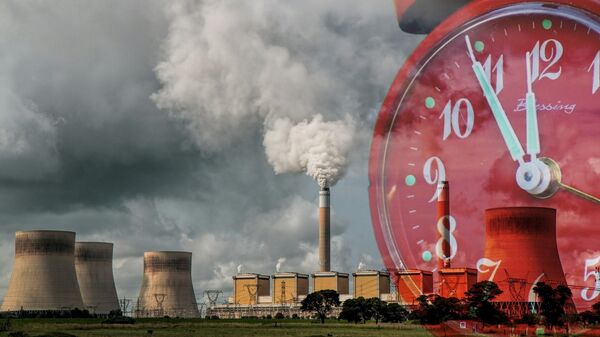Sputnik discussed how concerning this is with Professor Eelco Rohling from the Australian National University.
Sputnik: How concerning is the fact that atmospheric carbon levels traversed the 400 ppm? Why is this threshold considered a milestone and causes concern?
Eelco Rohling: I think we should be worried, this is, in fact, for the first time in geological records that we have measured that we are through this value, it's for the first time in about 3.5 million years ago, and we're going up faster than ever.
Sputnik: What's behind this?
Eelco Rohling: What's behind this is very simple — it's human emissions from fossil fuel burning and a little bit from the lime production for the cement industry and we have both, the economic records and the chemical records that demonstrate that humans have emitted almost two times the amount that we now see in the atmosphere, the other half is in the ocean where it causes ocean acidification.
READ MORE: NGO: Air Pollution Lawsuit Against EU States May Change Environment Policies
Just to put it into perspective, the amount that humans have emitted in total is 420 billion tons of carbon, and if you were to make an artist graphite pencil out of that, the pencil would be 24 x 24 meters from Earth to the Moon. That's how much carbon we're talking about has been emitted.
Sputnik: If I understand correctly a single CO2 molecule can remain in the atmosphere for hundreds of years, so even if we stop emitting what we've already emitted is going to continue to be in the atmosphere for hundreds of years. Is there any way to reverse that?
Eelco Rohling: What you could do is, of course, we've been playing with the Earth's system when we started to burn fossil fuels, normally fossil fuel‘s would always leak a little bit in the geological processes but very little, and we have massively increased that, so what we now need to start thinking about is, how can we massively increase the uptake of CO2?
Sputnik: Do you think we have any hope? Perhaps this scary number is going to scare people into action, maybe governments into action, of course, for instance, after the Paris agreement was signed that President Donald Trump pulled the US out of it, and the US is a significant contributor of CO2, of fossil fuels being burned?
Eelco Rohling: That was a single bit of very bad news and all we can do with something like that is to effectively just keep pushing and hope that sense will prevail. If we're all just looking at how much money comes in then you could say that we need to focus on fossil fuels but, of course, what we're beginning to see is that renewable energy is now beginning to compete price-wise with fossil fuels and then we're starting to get into an interesting situation where it's maybe politically the way to go with fossil fuels, but, actually, economically renewable energy starts to make much more sense.
READ MORE: Indian Hindu Group Burns 50 Tons of Wood to 'Curb Pollution'
This whole transition is going way too slow at the moment, we should be on a downward trajectory and we're still doing what we've always been doing, and if we just put that into perspective, if we keep doing what we're doing by 2100 we will be 4.5 degrees warmer than we are now.
Sputnik: Can you give us an idea of what effects that would have on us, being 4 degrees warmer on average?
Eelco Rohling: Four degrees warmer would be an absolute disaster. At four degrees warmer, I think we can safely say that the major ice sheets of the world in Greenland and Antarctica will become unstable, and, of course, it takes time to melt them but it will become irreversible then, and that they will melt, and then melting will take several centuries, but the sea level will go up dramatically when that happens.
Sea level is already projected even under the current projections of the IPCC (Intergovernmental Panel on Climate Change) is projected to go up by a meter by 2100, but if we destabilize Greenland and Antarctica it will go up several meters by 2100, and certainly 2200, 2300.
The views and opinions expressed by the expert speaker do not necessarily reflect those of Sputnik.




